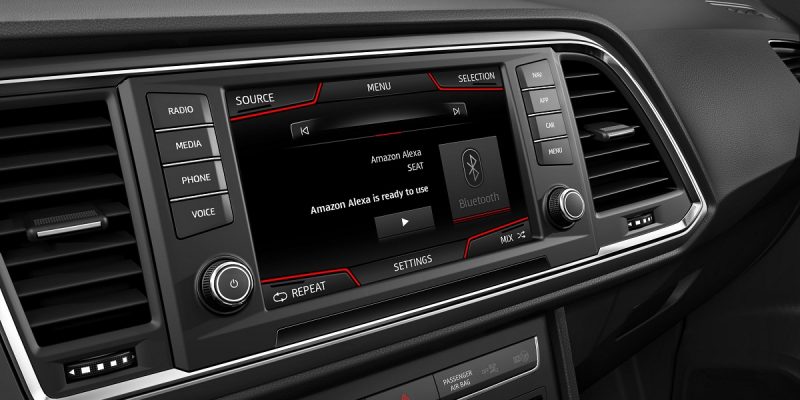Consumer adoption of in-vehicle payments (IVP) is accelerating as vehicle owners grow comfortable with contactless payment systems and automakers develop “unlockable” digital upgrades to vehicle systems.
Meanwhile, the ecosystem of partnerships between automakers, transaction facilitators and commercial enterprises continues to expand. All told, transaction payments made through a vehicle will total $1Bn by 2023, up from less than $100M in 2020, according to a December 2020 report by research firm Gartner. Pedro Pacheco, senior research director, explained the tepid consumer uptake so far has been the result of “limited services driving limited value”, something he expects to see change as automakers develop more integrated ecosystems with more inspiring offers.
“What automakers have started to do, and this was triggered by Tesla, is moving to functionalities with value driven by a consumer perspective and this is a game-changer,” he said. “Features like a built-in seat warmer you can subscribe to in cold weather months, then turn off later, these types of in-car payments will be a key driver of after-sales revenue for automakers.” Pacheco also pointed to an expanding market of purchasing and payment platforms, ranging from PayPal, to Amazon’s Alexa service, to Xevo Market or the China-based Banma platform to purchase fuel, food or pay for parking.
He explained one of the main obstacles for in-car payments, from paying for parking or fuel to fast food drive-ins and tolls, was the cumbersome nature of transactions owing to the lack of connectivity and an immature ecosystem between the automaker and its other partners. “What’s happening now is you have intermediaries who are coming into the picture and making this agglomeration process easier, they’re helping the automakers build this ecosystem,” he said. “You have Apple Pay, you have Google Pay, you can even have systems which simply collect your bank details and process the payments automatically, through blockchain.”
Pacheco said a possible sticking point with consumer acceptance would be location-based service (LBS) models whereby consumers would be targeted with ads while they drive, something they may be used to experiencing through free apps on their smartphone but not within a space they “own”. “The big conundrum here is how much would drivers or occupants enjoy this type of exposure, because it means you are a target to advertising in your own car. There is a certain breakthrough required because consumers are still not used to it,” he said. “You need to establish a context where it’s easier for the driver to accept, and then it becomes easier for them to accept this form of advertising. Automakers need to take the first step to enable this.”
Smartphone model
Andrew Till, head of automotive at Trustonic, noted friction-free experiences would be key to broader consumer acceptance, suggesting the auto industry take a close look at the smartphone ecosystem, which he calls “a proven model”. Another critical point that needs to be friction free is the security of the transaction, which could be aided by biometric authorization processes built into the vehicle itself.
As Till noted, by 2023 every vehicle sold in Europe will be required to have a vehicle monitoring system, which can be utilized to add a payment services dimension. “There’s a plethora of automakers building this technology into the vehicles and we’ve had a number of OEMs asking for IVP workshops,” he said. “We’ll see this take off in Asia first, with Hyundai and their fingerprint reader, in markets like Japan and Korea, where they have embraced these technologies.”
It will largely fall on the automakers themselves to communicate clearly the benefits that in-car payments bring consumers, Till argued, pointing out your average car owner isn’t interested in the back end architectures that make these services safe, secure and hassle-free. “They’re only going to be successful if the value proposition is very clear to consumers,” he said. “Keep it simple, get those experiences recognized as enriching my life, and then you can add more functionality and capabilities, and the consumer will pull things forward.”
Jeff Davis, senior director of government relations and public policy at BlackBerry, said there are several security considerations to take into account when including payments systems in vehicles, the most important being the change in conditions that occur when you add this level of motivation to criminally minded hackers. “By including payments systems in vehicles, you effectively increase the number, variety, and sophistication of the attackers exponentially by offering new motivations that do not currently exist,” he said.
That means the first focus must be on preserving safety, ensuring that abstraction layers prevent hackers to effect the safe operation of the vehicle, and to wall them off from other applications. This in turn drives the need to create a zero-trust architecture, continuous monitoring, and mandatory updates for developers.
Davis said all elements of the value chain also must ensure they continue service after the sale, for a number of years, to ensure their platforms stay hardened through threat hunting and continued updates. “The key is reducing that friction and creating an ecosystem where developers, business partners, and automakers can develop applications that work in the car and in the cloud without compromising safety and security, while maintaining the performance of the application,” he said.
By Nathan Eddy
Source: https://www.tu-auto.com
CUT COTS OF THE FLEET WITH OUR AUDIT PROGRAM
The audit is a key tool to know the overall status and provide the analysis, the assessment, the advice, the suggestions and the actions to take in order to cut costs and increase the efficiency and efficacy of the fleet. We propose the following fleet management audit.




